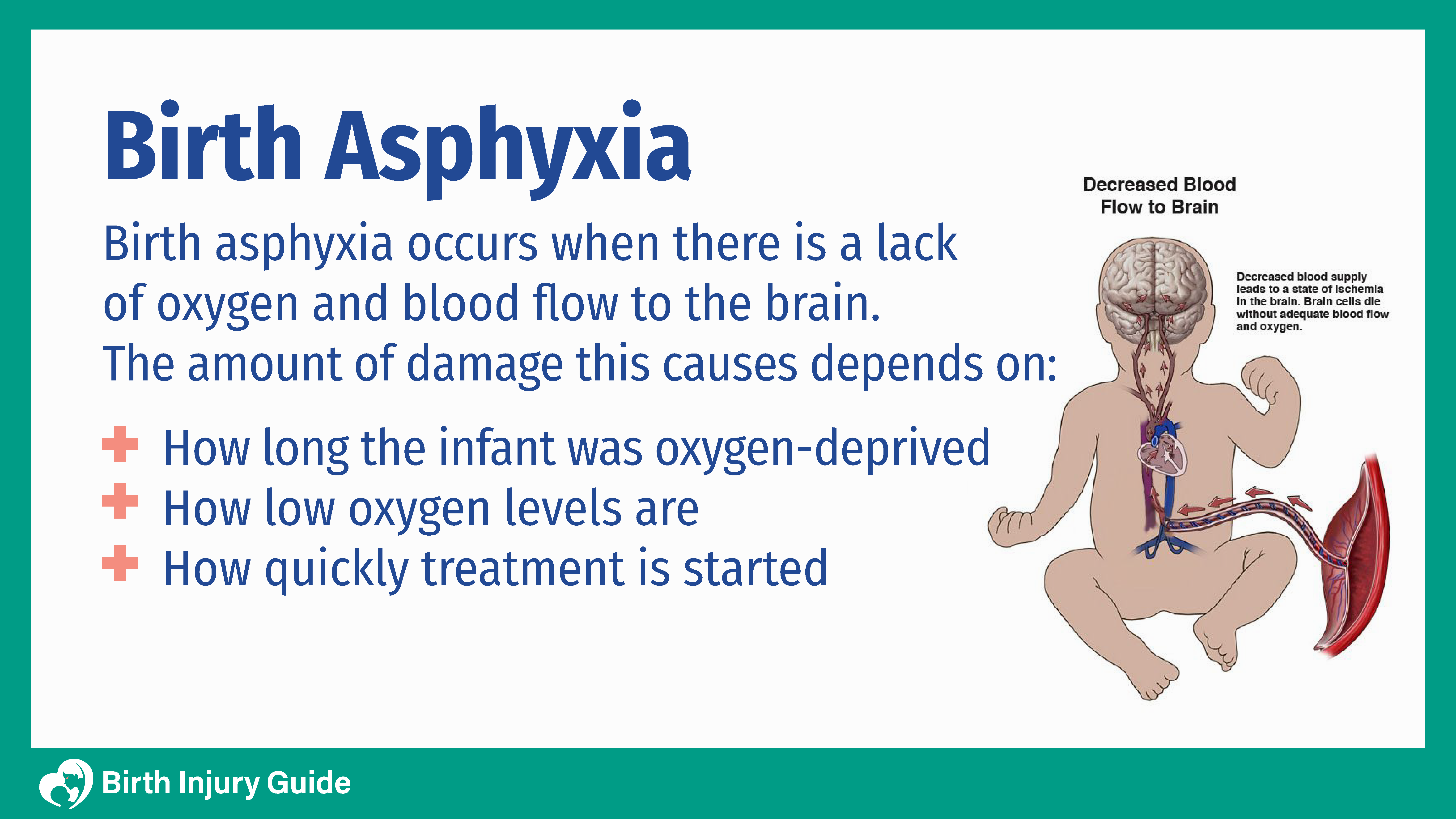
Birth Asphyxia
Birth asphyxia occurs when an infant does not get adequate oxygen before, during or just after delivery. There are various possible outcomes among infants who experience this birth injury. Some infants experience few, if any, symptoms and have no long-term damage. Others, however, experience more severe injuries, such as brain damage or permanent disability.
What is Birth Asphyxia?

Oxygen deprivation can happen in a few ways, usually related to the pinching or kinking of the umbilical cord when the baby accidentally presses against the umbilical cord in the womb. Birth asphyxia leads to anoxia or hypoxia, which can further lead to more serious injuries.
- Anoxia occurs when there is zero oxygen in the brain or muscles.
- Hypoxia occurs when there is only a low amount of oxygen in those areas.
What Causes Birth Asphyxia?
Birth asphyxia occurs as a result of complications or other factors affecting the mother or the infant. Some of the more common causes include:
- Umbilical cord prolapse
- Umbilical cord compression
- Meconium aspiration syndrome
- Premature birth
- Uterine rupture
- Infection
- Prolonged labor
- Fetal anemia
Can Birth Asphyxia be Prevented?
There are many complications or medical conditions that simply cannot be predicted during pregnancy, labor and delivery. However, there are some things that pregnant mothers can do to reduce the risk of certain complications or medical conditions that can cause birth asphyxia. Generally, risk factors for birth asphyxia include:
- Maternal age between 20 and 25
- Multiples (twins, triplets, etc.)
- Inadequate prenatal care
- Low birth weight
- Abnormal fetal presentation
- Preeclampsia or eclampsia
It is incredibly important that pregnant women get proper prenatal care. This is the best way to reduce the risk of certain complications and birth injuries.
What are the Symptoms?
If your baby hasn’t been tested yet, or if for whatever reason the tests don’t indicate that your baby has asphyxia, it’s important to keep an eye out for a few different kinds of symptoms so that you can catch the brain injury before it gets worse. Some obvious symptoms include:
- Not breathing
- Abnormal or weak breathing
- Skin color is bluish or pale
- The infant is silent (no crying)
- The infant is lethargic or limp
- Seizures
- Amniotic fluid is stained with meconium
- Low fetal heart rate
- Low blood pressure
- Poor muscle tone or reflexes
- Too much acid in the blood
Since an infant cannot vocalize what they are feeling, it is important for parents to be aware of the symptoms of birth asphyxia. If your child has any of these symptoms and you are concerned, contact your doctor right away.
Tests to Confirm Birth Asphyxia
There are a number of tests that can confirm perinatal asphyxia. These tests include blood gases to measure oxygen levels, CT scan, an MRI, and an Electroencephalogram (EEG). These may not be specific enough, so other more thorough tests include the SPECT tests, a form of CT scan that checks areas of the brain for blood flow and metabolism, and evoked potential tests, tests that evaluate the visual, auditory, and sensory pathways.
Treatment for Birth Asphyxia
Treatment for a child with birth asphyxia will depend on the severity of the injury and any other medical conditions he or she has. In the acute setting, treatment may include:
- Administering oxygen
- Emergency c-section (if asphyxia occurs during labor)
- Suctioning fluid away from the lungs
- Using a respirator
For severe cases, treatment options may include:
- Hyperbaric oxygen therapy
- Therapeutic hypothermia
- Medications
- Dialysis
- Ventilator breathing support
Prognosis
Birth asphyxia can be very severe. Once born, your baby might have stopped breathing for only a few seconds, causing hypoxia, or your baby could have been deprived of oxygen for minutes, leading to anoxia. This could further lead to other birth injuries such as Hypoxic Ischemic Encephalopathy (HIE) and cerebral palsy – two conditions that could affect your baby for the rest of his or her life.
If proper treatment is given immediately, there is less risk of long-term complications. Your child’s prognosis depends on how long he or she was not breathing, and how well he or she responds to treatment.
Short-term effects:
- Acidosis (excess acid levels in the blood)
- Respiratory distress
- Blood clotting problems
- High blood pressure
- Kidney problems
Long-term effects:
- Cerebral palsy
- Epilepsy
- Autism spectrum disorder
- Attention deficits
- Hyperactivity
- Intellectual disability
- Visual impairment
- Hearing impairment
The most important thing you can do after birth asphyxia is make sure your child has adequate care in both the short- and long-term. Work with specialists to learn how best you can care for your baby. Often, a multidisciplinary approach to treatment is best.



